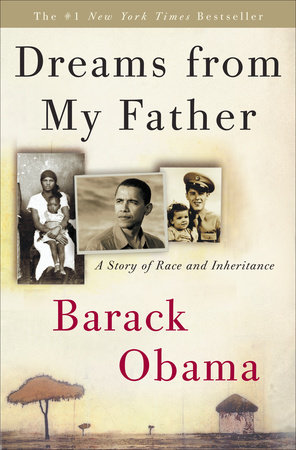Les Enfants de la colonie: Les métis de l’Empire français entre sujétion et citoyenneté / Children of The Colonies: The Métis of the French Empire: Citizens or Subjects?
Éditions La Découverte
2007
336 pages
Dimensions: 155 * 240 mm
ISBN: 9782707139825
Emmanuelle Saada, Associate Professor and Director of the Center for French and Francophone Studies
Columbia University

The colonial encounter in the French Empire produced tens of thousands of ‘métis’ children. Most were the product of short-term relationships between European men and native women. Many were abandoned by their fathers, and condemned to illegitimacy. Colonial elites considered them a threat because they blurred the sharp distinction between citizens and subjects on which the colonial order rested. Colonial authorities met this challenge with an array of social and legal efforts to resolve this ambiguity—to «reclassify» the « métis problem » out of existence. Education and culture played a key role in this process, as métis children were placed in special orphanages devoted to « straightening out their heredity », turning them into French citizens of « soul and quality ». This book explores the forgotten history of these children of the colonies, and of their central place in larger strategies of imperial domination and the management of colonial sexuality. It pays special attention to Indochina, which served as a laboratory for the “métis question”, but it is also an account of a global Empire marked by the persistent challenge of maintaining boundaries between citizen and subject. In exploring this intersection between sexuality, race and citizenship in the colonial context, this book challenges and revises the ‘republican model’ of nationhood that has dominated histories of France since the 19th century.
Pendant la colonisation française, des dizaines de milliers d’enfants sont nés d’« Européens » et d’« indigènes ». Souvent illégitimes, non reconnus puis abandonnés par leur père, ces métis furent perçus comme un danger parce que leur existence brouillait la frontière entre « citoyens » et « sujets » au fondement de l’ordre colonial. Leur situation a pourtant varié : invisibles en Algérie, ils ont été au centre des préoccupations en Indochine. La « question métisse » a également été posée à Madagascar, en Afrique et en Nouvelle-Calédonie.
Retraçant l’histoire oubliée de ces enfants de la colonie, cet ouvrage révèle une face cachée, mais fondamentale, de l’histoire de l’appartenance nationale en France : il montre comment les tentatives d’assimilation des métis ont culminé, à la fin des années 1920, avec des décrets reconnaissant la citoyenneté à ceux qui pouvaient prouver leur « race française ». Aux colonies, la nation se découvrait sous les traits d’une race.
Cette législation bouleversa le destin de milliers d’individus, passant soudainement de la sujétion à la citoyenneté : ainsi, en Indochine, en 1954, 4 500 enfants furent séparés de leur mère et « rapatriés » en tant que Français. Surtout, elle introduisait la race en droit français, comme critère d’appartenance à la nation. Cela oblige à revoir le « modèle républicain » de la citoyenneté, fondé sur la figure d’un individu abstrait, adhérant volontaire à un projet politique commun et à souligner les liens entre filiation, nationalité et race.
Table of Contents
- Préface, par Gérard Noiriel
- Introduction
- I / Le métissage : une question sociale coloniale
- 1. Une question impériale – Nouvel empire, nouvelle question – Hybrides et bâtards – Géographie de la question métisse – Un problème impérial – Les chiffres du métissage
- 2. Menace pour l’ordre colonial – Légionnaires, filles de peu et parias – Déracinés et déclassés – Le spectacle du désordre – Dignité et prestige en situation coloniale
- 3. « Reclasser » les métis – Produire des métis en leur portant secours ? – De la nécessité d’intervenir – Vers une prise en charge par l’État colonial – Notables vs. prolétaires de la colonisation – Dépister, signaler et secourir – Passer les frontières – Vers une demande de droit
- II / La question métisse saisie par le droit
- 4. Nationalité et citoyenneté en situation coloniale – Les enjeux d’une condition juridique – Les juristes et l’indigène – La citoyenneté française en pratique – Les métis entre sujétion et citoyenneté
- 5. La controverse des « reconnaissances frauduleuses » – Les « reconnaissances frauduleuses », « fraudes » à la citoyenneté – Destin d’une controverse juridique – La production d’un droit impérial – Paternité, citoyenneté et ordre politique
- 6. La recherche de paternité aux colonies – La recherche de paternité en métropole : un texte de compromis – Un débat colonial – Paternité et citoyenneté : nature et volonté – Paternité et race
- 7. Citoyens en vertu de la race – Le droit hors de lui – La « question métisse » saisie par le droit – Le retournement de la jurisprudence – La fabrique du droit colonial – Vérité sociologique/vérité biologique, « droit reflet »/« droit instituant » – Mise en œuvre d’un droit racial
- III / La force du droit
- 8. Le passage du droit : les effets de la citoyenneté sur la catégorie de « métis » – La racialisation des pratiques administratives – Renforcement de la prise en charge des métis – Les métis, des cadres de la colonisation – Une question postcoloniale
- 9. Des identités saisies par le droit – Des Français des colonies – Vers un multiculturalisme impérial ? – Catégorie juridique et sentiment d’identité
- 10. Le statut des métis, miroir de la nationalité et de la citoyenneté françaises ? – La race dans la loi – Métis coloniaux et métis juifs – La question métisse et les « modèles républicains » de la nationalité et de la citoyenneté
- Conclusion – Sources – Bibliographie.









